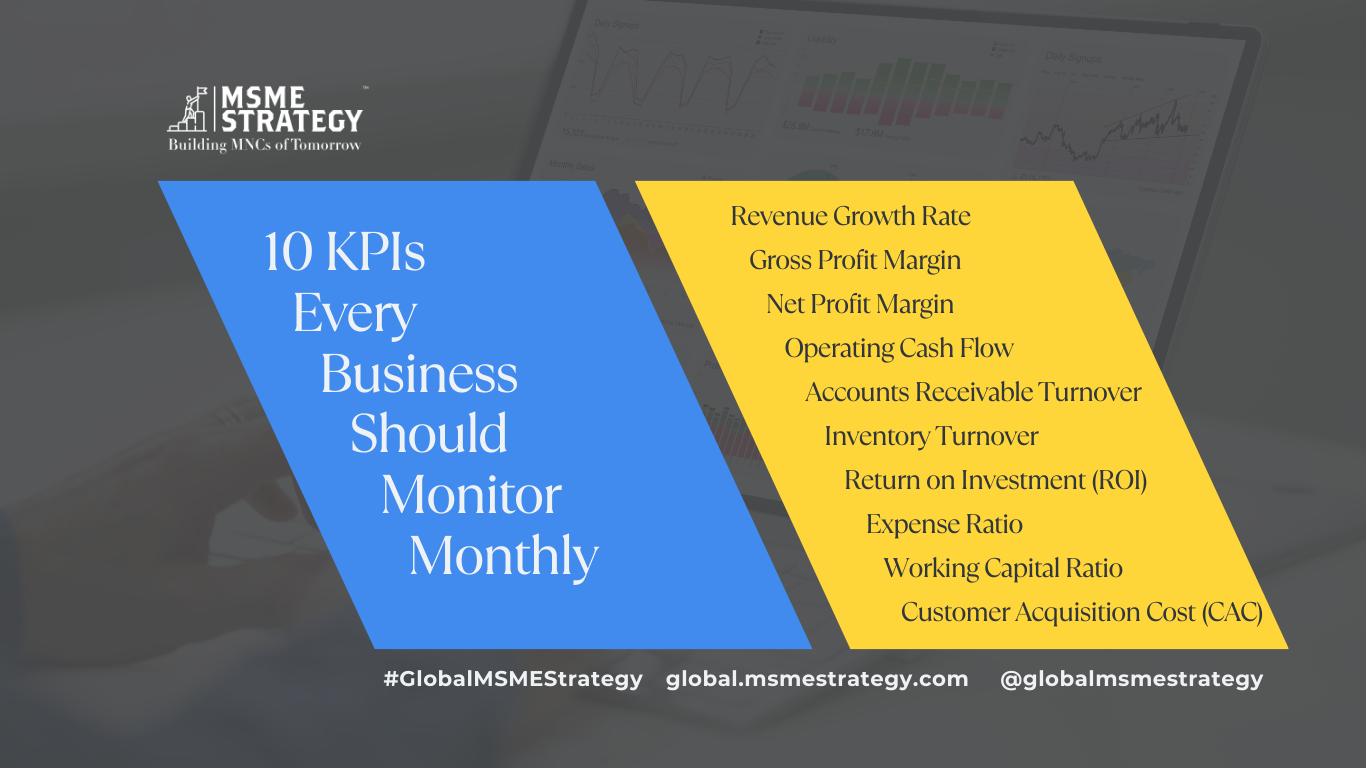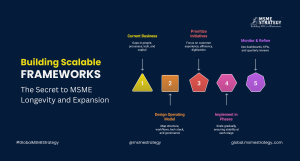In a rapidly evolving global economy, small and medium-sized enterprises (SMEs) face a host of financial management challenges. From fluctuating market demands to the rising need for digital transformation, businesses worldwide must prioritize financial clarity and agility. CFOs, in particular, must maintain a sharp focus on critical financial metrics to ensure their organizations stay resilient and competitive.
This article offers a comprehensive diagnostic checklist of 10 key performance indicators (KPIs) that every SME CFO should monitor monthly, blending traditional financial wisdom with emerging global trends in financial management and analytics.
Understanding the 10 Essential KPIs
1. Revenue Growth Rate
Revenue growth is a fundamental indicator of business vitality. Monitoring this metric monthly helps CFOs evaluate sales performance, market expansion efforts, and the overall business trajectory. Stable or increasing revenue signals effective market positioning, while declines call for strategic realignment.
2. Gross Profit Margin
Gross profit margin measures how efficiently a company produces and sells its goods or services. It highlights the relationship between production costs and pricing strategies. CFOs must track this KPI to ensure that rising costs or pricing pressures do not erode profitability.
3. Net Profit Margin
Net profit margin reflects the percentage of revenue remaining after all expenses. This metric gives a complete picture of business efficiency. By analyzing this monthly, CFOs can identify systemic inefficiencies or overspending and address them swiftly.
4. Operating Cash Flow
Cash flow from operating activities is a crucial sign of financial health. Positive cash flow ensures that the business can meet its obligations, invest in growth, and weather unexpected downturns. Tracking this KPI monthly highlights liquidity trends that can inform tactical and strategic decisions.
5. Accounts Receivable Turnover
Accounts receivable turnover assesses how quickly a company collects outstanding invoices. High turnover ratios suggest efficient collections processes, while lower rates may indicate customer credit issues or inefficiencies in invoicing.
6. Inventory Turnover
Inventory turnover shows how effectively a company manages its stock. Regular monitoring prevents excess inventory buildup, reduces storage costs, and improves cash flow. High turnover typically points to strong sales and efficient inventory management.
7. Return on Investment (ROI)
Whether investing in marketing, new technologies, or expansion, SMEs must ensure that investments yield positive returns. Tracking ROI monthly enables CFOs to allocate resources to the most profitable initiatives.
8. Expense Ratio
This ratio compares operational expenses to revenue. A rising expense ratio could signal waste, inefficiencies, or the need for cost control measures. Maintaining an optimal expense ratio is essential for long-term profitability.
9. Working Capital Ratio
Also known as the current ratio, this KPI measures short-term liquidity. It shows whether a business can meet its short-term obligations with its short-term assets. Monitoring it monthly helps SMEs stay financially agile and avoid liquidity crises.
10. Customer Acquisition Cost (CAC)
CAC evaluates how much it costs to gain a new customer. It is particularly crucial for scaling businesses. A rising CAC without a corresponding rise in revenue or customer lifetime value can strain profitability and cash flow.
Latest Global Trends in SME Financial Monitoring
Today’s SMEs are no longer confined to traditional accounting methods. Global trends are reshaping financial monitoring in exciting ways:
- Data-Driven Decision Making:
SMEs worldwide are leveraging advanced analytics platforms that provide real-time insights into financial metrics, helping CFOs anticipate risks and spot growth opportunities faster than ever. - AI and Automation:
Artificial intelligence is increasingly used for financial forecasting, anomaly detection, and automatic reconciliation, enabling SMEs to streamline operations and focus more on strategic initiatives. - Cloud-Based Financial Systems:
Cloud adoption continues to surge, offering SMEs more accessible, scalable, and secure financial management tools that promote collaboration across geographically dispersed teams. - Focus on ESG Metrics:
Environmental, Social, and Governance (ESG) considerations are being integrated into financial reporting. SMEs are beginning to track sustainability KPIs alongside traditional financial metrics to attract investors and customers focused on ethical business practices. - Global Benchmarking:
SMEs are increasingly comparing their performance against global and regional standards to ensure competitiveness and uncover areas for improvement, fueled by the availability of international financial data and benchmarking platforms.
Actionable Monthly Checklist for CFOs
To stay on top of these vital KPIs and align with global best practices, CFOs should:
- Set up automated financial dashboards for real-time KPI tracking.
- Conduct monthly financial reviews with cross-functional teams.
- Benchmark KPIs against industry and global standards.
- Analyze trends and variances to adjust strategies promptly.
- Implement predictive analytics tools to forecast future performance.
- Regularly train finance teams on interpreting and acting upon financial data.
- Stay updated with regulatory changes and global financial trends.
- Integrate ESG considerations into regular financial reporting.
- Ensure cybersecurity measures are in place for cloud-based financial data.
- Collaborate with external consultants for independent KPI assessments.
Monitoring these KPIs systematically empowers CFOs to drive strategic growth, manage risks effectively, and build financially resilient SMEs in a competitive global market.
MSME Strategy Consultants (global.msmestrategy.com) – Experienced consultants are ready to assist SMEs globally in optimizing financial monitoring and achieving sustainable growth.
#GlobalMSMEStrategy #MSMEs #BusinessGrowth #FinancialKPIs #CFOChecklist






